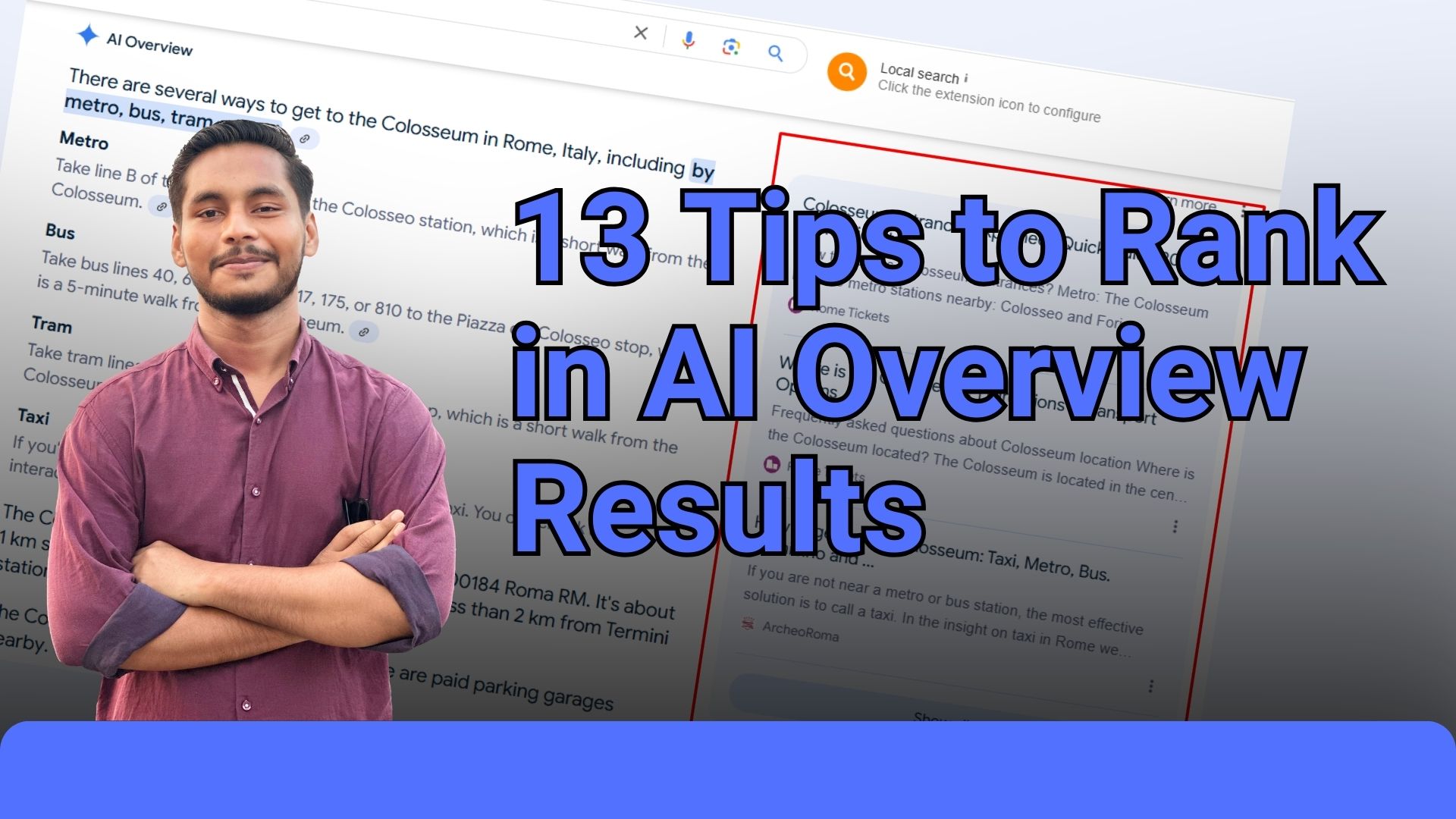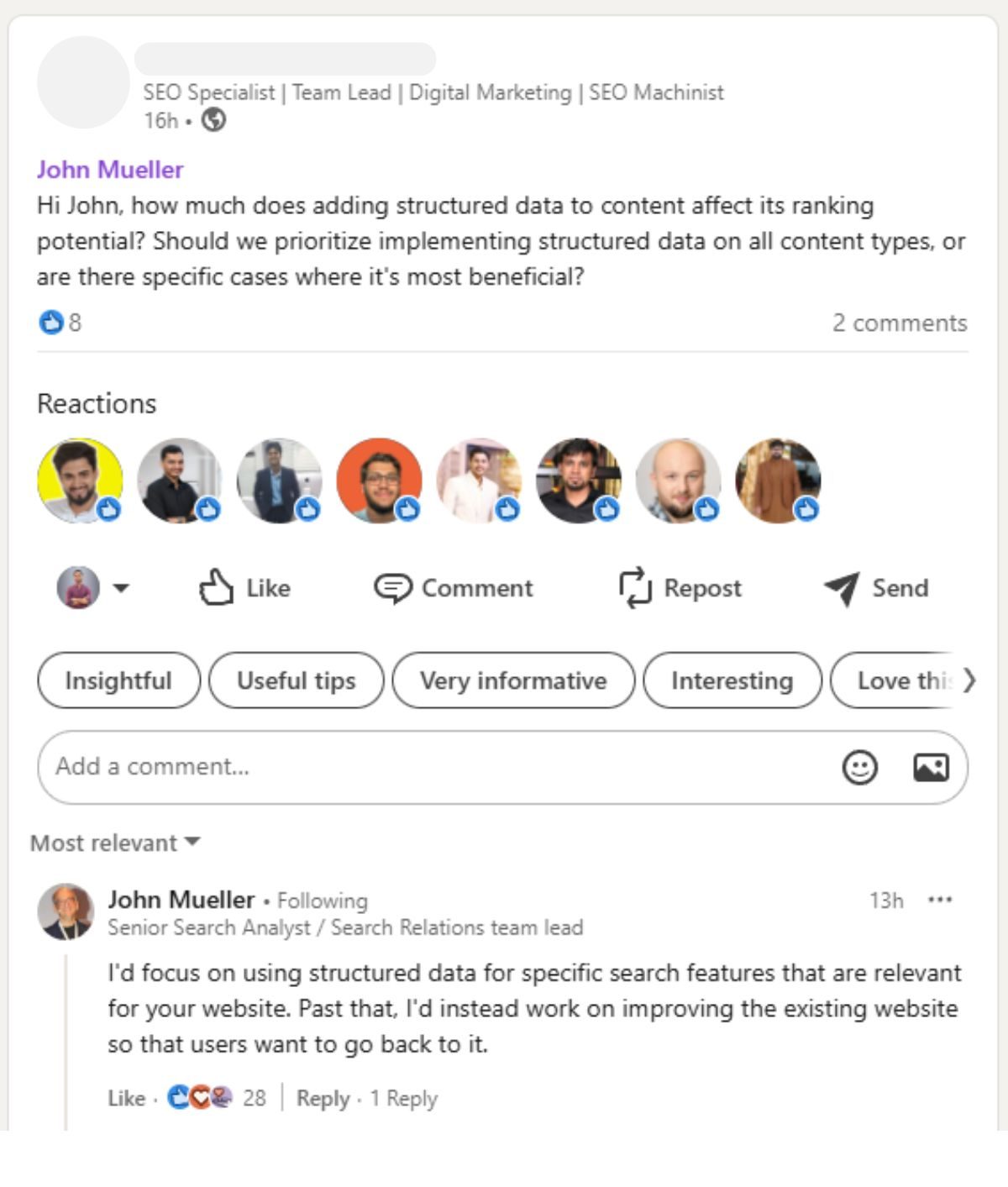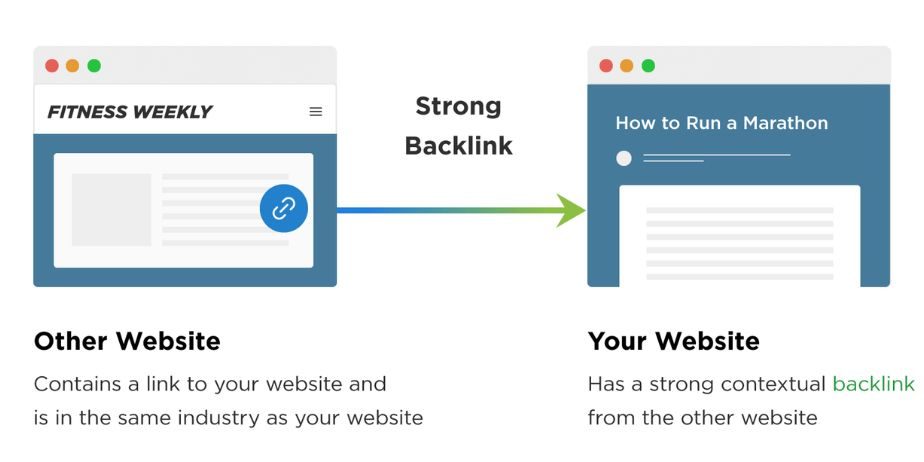
Today, Google is facing tough competition from ChatGPT new web search features. In November, ChatGPT had around 4.4 billion visits, making it the third most-visited platform. In response, Google introduced AI Overviews powered by their Gemini AI. These overviews provide quick answers at the top of search results, similar to featured snippets but with added AI features from Gemini.
So, how can you make sure your content gets featured in these summaries? SEO is no longer just about creating great content—it’s about structuring it strategically. In this guide, I’ll walk you through simple, actionable steps to help your website rank in AI Overviews and boost your visibility in search results.
Today, Google is facing tough competition from ChatGPT new web search features. In November, ChatGPT had around 4.4 billion visits, making it the third most-visited platform. In response, Google introduced AI Overviews powered by their Gemini AI. These overviews provide quick answers at the top of search results, similar to featured snippets but with added AI features from Gemini.
So, how can you make sure your content gets featured in these summaries? SEO is no longer just about creating great content—it’s about structuring it strategically. In this guide, I’ll walk you through simple, actionable steps to help your website rank in AI Overviews and boost your visibility in search results.
Today, Google is facing tough competition from ChatGPT new web search features. In November, ChatGPT had around 4.4 billion visits, making it the third most-visited platform. In response, Google introduced AI Overviews powered by their Gemini AI. These overviews provide quick answers at the top of search results, similar to featured snippets but with added AI features from Gemini.
So, how can you make sure your content gets featured in these summaries? SEO is no longer just about creating great content—it’s about structuring it strategically. In this guide, I’ll walk you through simple, actionable steps to help your website rank in AI Overviews and boost your visibility in search results.
AI Overviews are changing the way search results work, offering quick, no-scroll answers to users.
To rank in AI Overview, you need to focus on high-quality content by implementing proper on-page and off-page SEO strategies. I mentioned earlier that SEO is not writing content anymore. Search engines prioritize pages that are credible and relevant, so delivering high-quality, well-optimized content is the best way to stand out.
Google launched AI Overview on May 14, 2024, and every marketer has analyzed AI Overview differently. In this case study from SE Ranking & Surferseo, they analyzed 100k keywords in an AI overview and found an unbelievable key factor.
Here are the AI Overviews Research Data:

AI overview is a summary of a query answer that appears at the top of search engine results, providing quick answers to users. Ranking in AI Overviews requires more than just good content; it’s about understanding the key factors that search engines use to highlight certain pages.
From keyword optimization to credibility, these factors determine which pages are featured in AI-generated summaries. Let’s drive the checklist that helps you rank in the AI overview.
AI overview is a summary of a query answer that appears at the top of search engine results, providing quick answers to users. Ranking in AI Overviews requires more than just good content; it’s about understanding the key factors that search engines use to highlight certain pages.
From keyword optimization to credibility, these factors determine which pages are featured in AI-generated summaries. Let’s drive the checklist that helps you rank in the AI overview.

AI overview is a summary of a query answer that appears at the top of search engine results, providing quick answers to users. Ranking in AI Overviews requires more than just good content; it’s about understanding the key factors that search engines use to highlight certain pages.
From keyword optimization to credibility, these factors determine which pages are featured in AI-generated summaries. Let’s drive the checklist that helps you rank in the AI overview.
AI Overviews don’t just show links to websites related to the search. They also provide links to other resources on similar topics, letting users easily explore more or dive deeper using additional links and drop-downs.
To improve your chances of ranking in AI Overviews and the top SERPs, try narrowing down your keywords and offering content variations with a unique approach.

For example: if you’re writing for the keyword “Rome to Colosseum transfer,” you could also target variations like “best transfer from Rome to Colosseum,” “cheap transfer Rome to Colosseum,” “best ways to get from Rome to Colosseum,” or “things to do in the Colosseum.”
By covering related topics, Google will better understand your content, consider if you are the expert on this topic, and prioritize it for top rankings.
Onpage is a foundational ranking factor, and AIOs often don’t include exact search terms, so content optimization must be a key factor.
Ensure all on-page factors, including all headings, subheadings, meta titles, description, URL slug, internal-external linking, and naturally adding primary & LSI keywords.
Always Focus on answering user queries concisely, maintaining a logical flow, and incorporating schema markup to stay ahead of the curve.
Optimizing for AI overviews (AIOs), treat it like going for a featured snippet. Start by answering the user’s question directly within the first couple of sentences.

Optimizing for AI overviews (AIOs), treat it like going for a featured snippet. Start by answering the user’s question directly within the first couple of sentences.
Once the direct answer is provided, expand with supporting details, such as examples, statistics, or step-by-step instructions it will be chosen for AI Overview + featured snippet
💡 Pro Tips: It’s not just about keywords; it’s about being clear, concise, and helpful right from the start.
When writing content, focus on using natural, conversational language that’s easy for readers to follow. The easier your content is to understand, the more likely Google will recognize its relevance and include it in AI-generated summaries or featured snippets.
You can use the Hemingway Editor to enhance your content’s readability. It highlights areas for improvement, making your writing more accessible and engaging. My recommendation is to aim for a readability score below 10.

Break down your content into short paragraphs, bullet points, and lists. This way, your content will be simpler for the reader to grasp your message and help Google quickly identify and summarize the key points relevant to a user’s query.
Structured Bullet points on content improve readability and increase the chances of appearing in AI-generated overviews.
💡 Pro Tip: Keep your lists focused and concise. Each point should deliver clear value without unnecessary fluff.
Schema markup, or structured data, helps Google better understand your content. Using the right schema types for your content improves your chances of standing out in rich snippets, AI-generated summaries, and search results.
John Mueller, Google’s Search Advocate, recently responded to a question about schema markup on LinkedIn.

Question:
Hi John, how much does adding structured data to content affect its ranking potential? Should we prioritize implementing structured data on all content types, or are there specific cases where it’s most beneficial?
John’s Response:
I’d focus on using structured data for specific search features that are relevant for your website. Past that, I’d instead work on improving the existing website so that users want to go back to it.
so, its important to using schema should be relevent on your business or services.
Here are the types of schema use cases:

💡 Pro Tip: Make sure to validate your schema with tools like Google’s Rich Results Test and Schema Validator to ensure errors before Implementing.
Creating quality content is just the start. Don’t rely on just quality content also ensuring a smooth, enjoyable experience for users on your website is equally important.
How you improve the user experience:
💡 Pro Tip: Make sure to validate your schema with tools like Google’s Rich Results Test and Schema Validator to ensure errors before Implementing.

Find your user pain point by analyzing the heatmap and getting eyes on your heatmap, how users interact with your website/content & where users are struggling. By highlighting where users click, scroll, or spend the most time, heatmaps reveal what’s working and what’s not.
If people aren’t clicking your CTA, you should reposition it. Or, if they’re not scrolling far enough to see key content, you can adjust your layout.
For example: A travel website noticed through heatmaps that users were clicking on images of destinations, assuming on the Button. By adding clickable links to those images, the site improved navigation and boosted bookings.
💡 Pro Tip: You can use Bing Clarity-free tools to track user behavior and identify pain points, creating a smoother & user-friendly UX.
Google loves fresh and high-quality content that provides users with helpful & up-to-date information. By regularly updating your content, you show Google that your site is active and dedicated to delivering the latest insights.
Regular updates let you include the latest data, answer new user questions, and fine-tune your SEO approach. This not only boosts your content’s relevance but also increases your ranking position. A recent study found that 52% of sites using AI for content overview are in the top 10 positions. Therefore, if your content ranks well in search engine results pages (SERPs), it also has a higher chance of appearing in AI-generated summaries and featured snippets.
💡 Pro Tip: You can use Bing Clarity-free tools to track user behavior and identify pain points, creating a smoother & user-friendly UX.

Google still values the referral backlink. Recent data from a Google warehouse leak shows that backlinks from high-quality sites within the same country are preferred. This highlights the importance of focusing on relevant, local backlinks to improve your chances of ranking higher in search results.
It will give your content more authority and value in search results.
The more relevant and authoritative the websites linking to you, the stronger your site’s position becomes in the eyes of Google.
The future of SEO isn’t just about creating more content—it’s about structural improvement.
Ensure your site is technically optimized. Start by fixing crawl errors, cleaning up URLs, addressing duplicate content, updating your sitemap, configuring robots.txt, implementing canonical tags, and optimizing LCP (Largest Contentful Paint) to boost your site’s performance.
Regularly monitor your website’s performance to ensure your SEO efforts are effective. Use tools like Google Analytics, Google Search Console, and Bing Webmaster Tools to track key metrics such as traffic, bounce rates, keyword rankings, and conversions.
Additionally, tools like Semrush and Ahrefs are valuable for building strategies that help you track competitor performance and uncover new opportunities to optimize your content and rankings.
Ranking in AI Overviews needs to balance high-quality content, strategic SEO optimization, and technical precision. By focusing on key factors like on-page SEO, structured data, user experience, and backlink building, you can improve your chances of being featured. Implement these steps, monitor your progress, and stay ahead of the competition to secure your place in the evolving world of AI-powered search.
If you’re looking for expert guidance, check out my SEO service to take your strategy to the next level. Let’s help you get the visibility your content deserves!